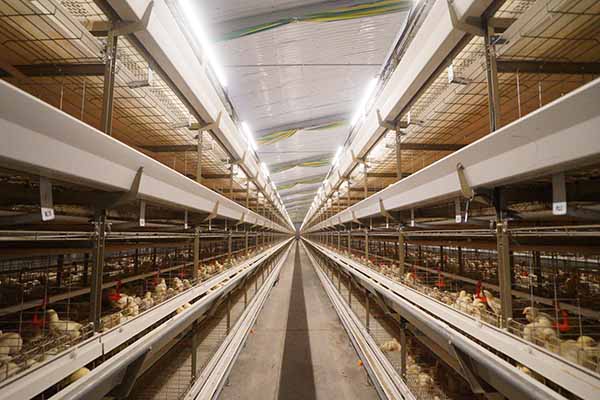Energy-saving Optimization Plan for Chicken Farming Equipment in Kenya
Time : 2025-04-26
In Kenya, the poultry industry has been growing at a rapid pace, with chicken farming becoming a significant source of protein for the local population. However, as the industry expands, so does the energy consumption of farming equipment. This article aims to provide a comprehensive energy-saving optimization plan for chicken farming equipment in Kenya, ensuring efficiency and cost-effectiveness.
Introduction
Energy-saving is crucial for any business, especially in the agriculture sector where energy costs can significantly impact profitability. Chicken farming is no exception, with the potential for substantial energy savings through optimized equipment usage and management. In this article, we’ll delve into practical strategies that can be implemented in Kenyan chicken farms to reduce energy consumption.
1. Assess Current Energy Consumption
Before implementing any optimization plan, it’s essential to understand the current energy consumption of your chicken farming equipment. This involves monitoring electricity usage, water consumption, and any other energy sources like gas or solar power.
1.1 Electricity Usage
Start by installing energy meters on all equipment to track electricity consumption. Common chicken farming equipment that consumes electricity includes:
– Fans and heaters for temperature control
– Feeders and waterers
– Processing and packaging machines
– Lighting systems
Keep a detailed record of energy usage over a month to identify peak consumption times and equipment that consumes the most energy.
1.2 Water Consumption
Water is another critical resource in chicken farming, used for drinking, cleaning, and irrigation. Monitor water usage with a flow meter to determine the amount of water being consumed daily.
2. Upgrade to Energy-efficient Equipment
One of the most effective ways to save energy is by upgrading to more efficient equipment. Here are some recommendations:
2.1 LED Lighting
Replace traditional lighting systems with LED lights. LEDs consume significantly less energy and have a longer lifespan, reducing maintenance costs.
2.2 Energy-efficient Fans and Heaters
Invest in fans and heaters with high energy efficiency ratings. Look for models that can be controlled by thermostats to adjust the temperature as needed, reducing unnecessary energy consumption.
2.3 Automatic Feeders and Waterers
Automated feeding and watering systems can reduce energy usage by ensuring that food and water are provided only when needed. This also helps in reducing waste.
3. Implement Energy-saving Practices
In addition to upgrading equipment, there are several practices that can be implemented to save energy:
3.1 Optimize Lighting
Use timers to control lighting systems, ensuring that lights are only on during operating hours. Natural light can also be utilized during the day to reduce the need for artificial lighting.
3.2 Temperature Management
Maintain the optimal temperature for your chickens, as fluctuations can lead to increased energy consumption. Use energy-efficient insulation and weather stripping to keep the heat in during colder months.
3.3 Regular Maintenance
Regular maintenance of equipment can prevent inefficiencies that lead to increased energy consumption. Check for leaks, clean filters, and replace worn-out parts promptly.
4. Energy Monitoring and Management
Implementing an energy management system can help you keep track of energy consumption and identify areas for further optimization. Consider the following:
4.1 Energy Monitoring Software
Use software that can track energy consumption in real-time, allowing you to make informed decisions about energy usage.
4.2 Energy Audits
Conduct regular energy audits to identify areas of inefficiency and implement corrective measures.
5. Employee Training
Employees play a crucial role in energy conservation. Train your staff on the importance of energy-saving practices and how to operate equipment efficiently.
Conclusion
Implementing an energy-saving optimization plan for chicken farming equipment in Kenya can lead to significant cost savings and a more sustainable operation. By assessing current energy consumption, upgrading to energy-efficient equipment, implementing energy-saving practices, monitoring energy usage, and training employees, you can ensure a more efficient and profitable chicken farm.
Remember, energy-saving is not just about reducing costs; it’s also about contributing to a greener and more sustainable future.
Tags
{Energy Efficiency, Chicken Farming, Kenya, Sustainability, Equipment Optimization}











